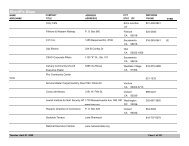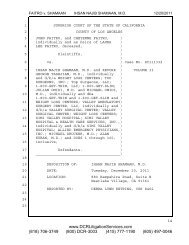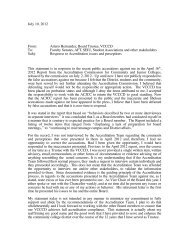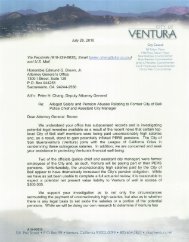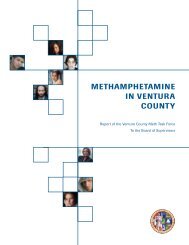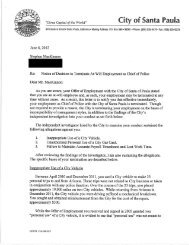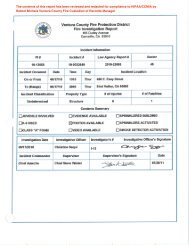Metrolink peer review report - Ventura County Star
Metrolink peer review report - Ventura County Star
Metrolink peer review report - Ventura County Star
You also want an ePaper? Increase the reach of your titles
YUMPU automatically turns print PDFs into web optimized ePapers that Google loves.
METROLINK COMMUTER RAIL SAFETY PEER REVIEW PANEL<br />
Final Report – January 5, 2009<br />
Issue Papers<br />
safe stop. Use of cab signals is usually indicated, in two particular circumstances – cab signals or the equivalent is<br />
required for operation above 79 mph and may be deployed where fog frequently obscures wayside signals.<br />
ATS might be considered to cost less than other solutions, but only if the circumstances fit its limited<br />
functionality; every train using the line must be equipped, but not every collision can be prevented. Passive (or<br />
“inert”) transponders cost about $20 thousand each, but the more effective active transponders (only active when<br />
the signal system indicates restrictive speed) run about $160 thousand per location. ATS technology is dated, and<br />
ATS equipment (even active transponders) can not be deemed as a precursor to PTC. The ATS equipment would<br />
be discarded as part of the PTC installation.<br />
SCRRA has applied to the FRA for a waiver to expand ATS beyond its current ATS territory. Currently the<br />
<strong>Metrolink</strong> system uses a passive/inert ATS on the Orange <strong>County</strong> Line south of Anaheim, which is the same<br />
system used on the San Diego Coaster commuter rail system. This ATS system uses passive/inert inductors which<br />
are not tied to the signal system. SCRRA plans to expand the use of ATS outside the Orange Line territory by<br />
installing 43 passive/inert inductors at spots where there is a 20mph or greater speed restriction.<br />
As noted above, ATS will only prevent or reduce the potential impact of accidents. Therefore, the expansion of<br />
the ATS technology on the <strong>Metrolink</strong> system should be limited to those areas of the right-of-way that provide the<br />
greatest potential for reducing the risk of accidents. In summary,<br />
• ATS technology is dated, and ATS equipment (even active transponders) does not migrate efficiently to the<br />
more advanced Positive Train Control technology. ATS will have to be discarded when implementing PTC;<br />
• ATS is a reactive system and doesn’t positively stop a train; the locomotive can only be controlled after the<br />
fact;<br />
• An ATS system does not protect against a reflexive acknowledgement of a signal by the engineer; in that case,<br />
the engineer could continue to proceed at speed past a signal or restriction and potentially collide with an<br />
oncoming train; and<br />
• The expansion of ATS on the <strong>Metrolink</strong> System could divert both financial and engineering resources that<br />
could be better spent on installing PTC.<br />
Positive Train Control (PTC)<br />
PTC is the most widely used name for advanced communications-based train control systems designed to prevent<br />
train-to-train collisions, overspeed derailments by controlling speeds at designated civil restricted track locations,<br />
and provide protection for track maintenance forces working in their assigned track location. (Track forces can<br />
only be protected from a moving train if they, like a train, have a unique authority for track occupancy within<br />
specified work limits, and if the principle of ensuring only one occupant per track segment at a time is strictly<br />
observed.)<br />
PTC designs are integrated systems using various components to determine precisely where the train is located,<br />
what track occupancy and movement authority it has been given, how the engineer is handling the train’s<br />
operation with respect to that authority, and (if the train’s authority is likely to be violated) how to bring it to a<br />
safe stop. These functions could perhaps be refined to the point where, out on the main line, no operator would<br />
be needed at all (auto pilot). Railroad managers do not propose to extend PTC that far; the preferred concept of<br />
operation is to guide and remind the engineer, leave safe operation in his/her hands, and intervene only to prevent<br />
imminent violations of movement authority and speed limits.<br />
53



